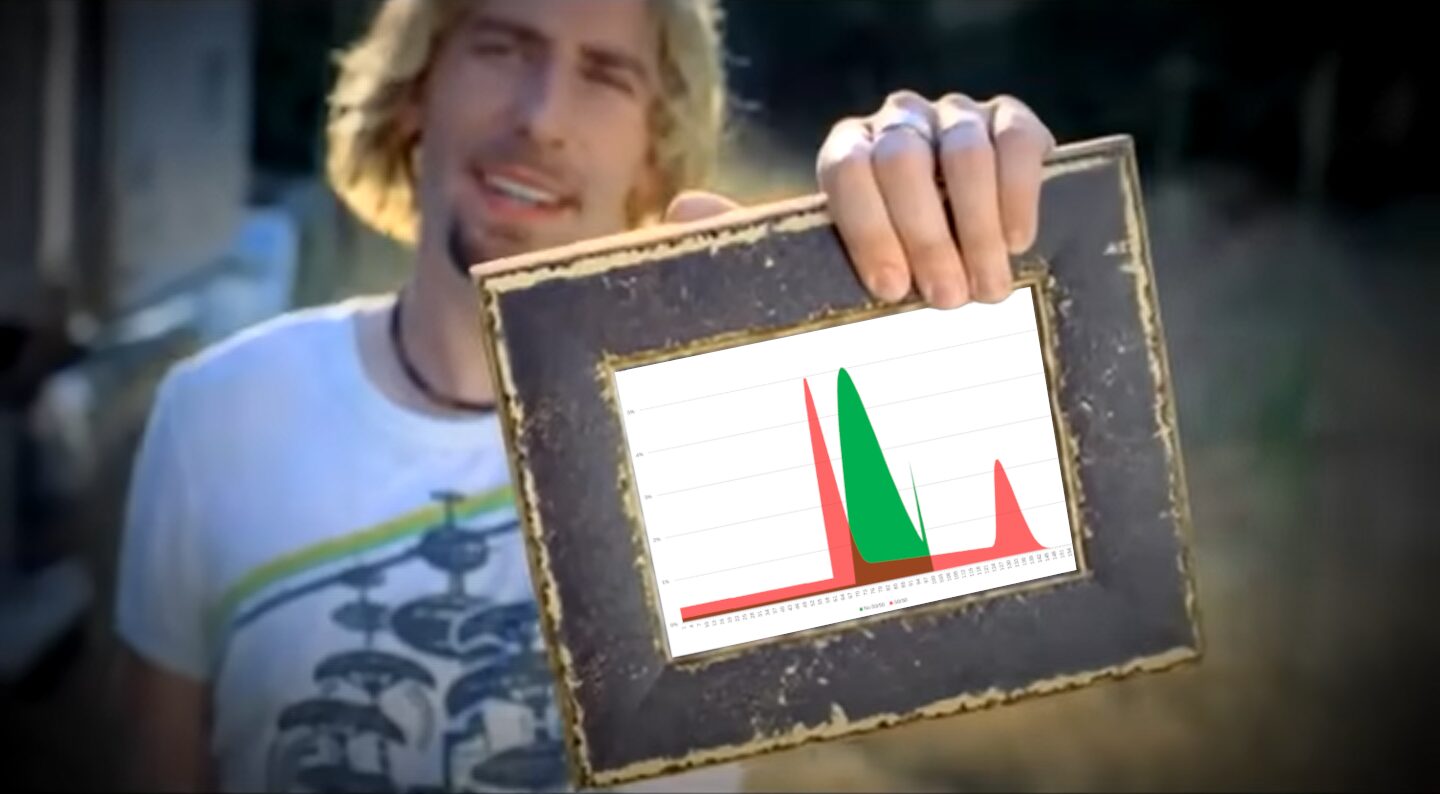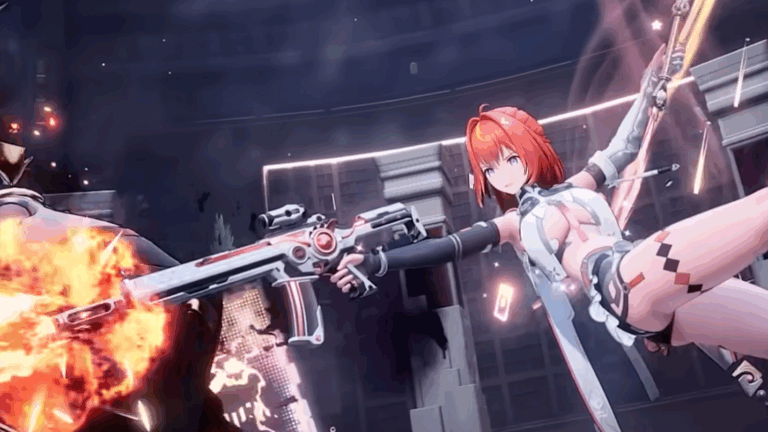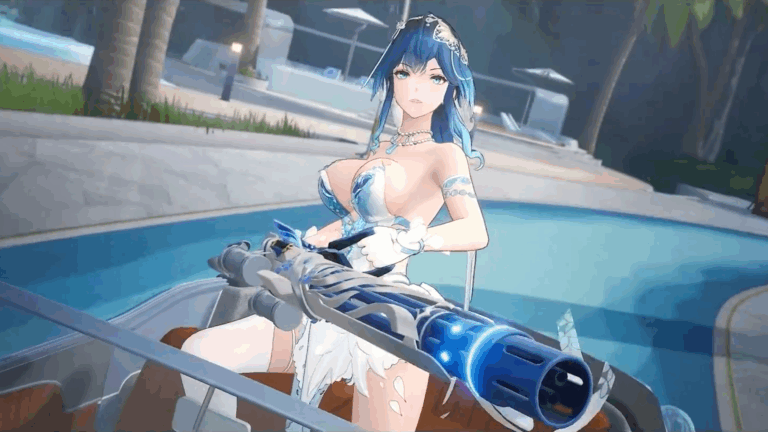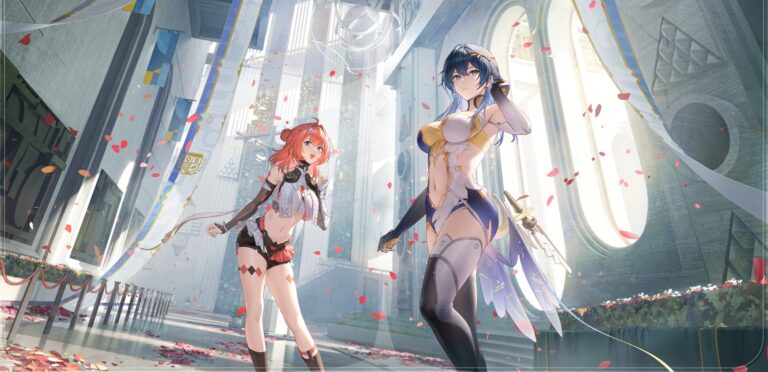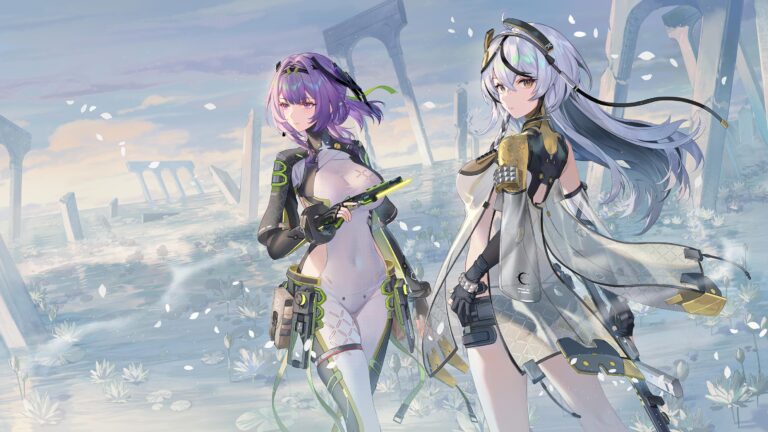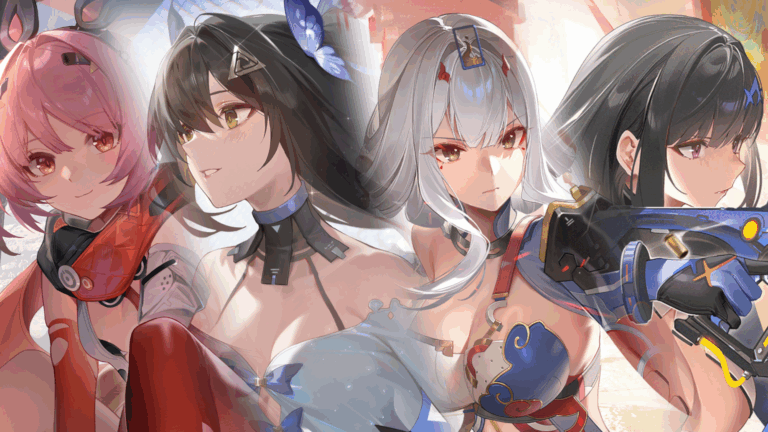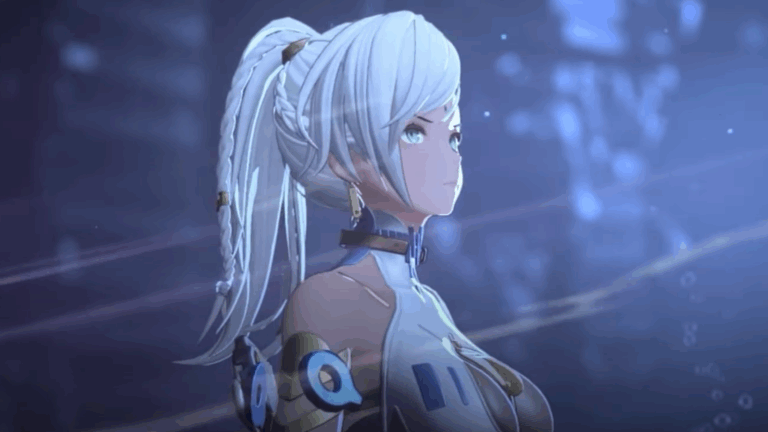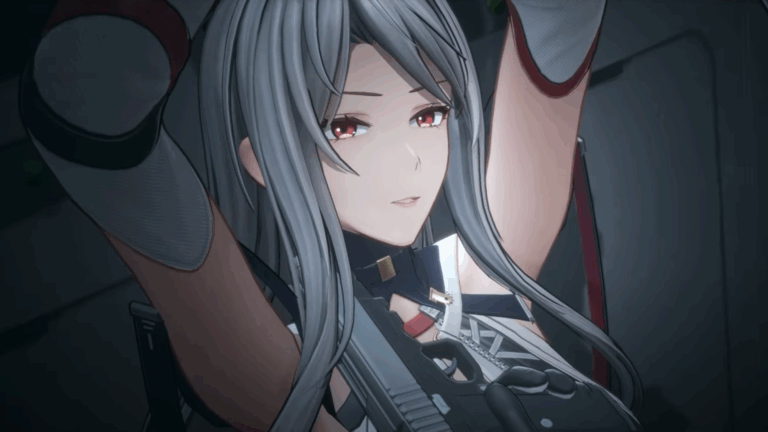Table of Contents
With the 1.8 Realm of Illusion update, Seasun has added in a new type of banner for both operatives and weapons that notably does not have a 50/50 system. In other words, every SSR you pull on that banner will be the one being featured. However, this does come at the cost of higher pity thresholds and lower advertised SSR rates. Is it worth the tradeoff? That’s what I wanted to find out, so please join me as we do way too much math and make sense of it all.
Basic Info
To understand how the gacha works, we need some key information. The four important numbers to know here are:
- Base SSR rate: the chance of getting an SSR item on any given roll until you reach soft pity (higher is better).
- Soft pity threshold: the number of pulls required before the SSR rate begins increasing (lower is better).
- SSR rate increment: the amount by which the SSR rate increases for every pull after the soft pity threshold that an SSR item is not obtained (higher is better).
- Hard pity threshold: the number of pulls required for the game to rig the odds and give you an SSR item (lower is better).
- Consolidated SSR rate: the rate at which you’ll pull SSRs (does not have to be the featured SSR!) given an infinite number of pulls. This is actually listed on the gacha details page, as part of legal requirements or something.
These values are taken straight from the game and are all listed in the table below:
| Stat | Operative 50/50 | Operative 100% | Weapon 50/50 | Weapon 100% |
| Base SSR Rate | 0.7% | 0.1% | 0.7% | 0.1% |
| Soft Pity Threshold | 62* | 70 | 45 | 60 |
| SSR Rate Increment | 5% | 0.75% | 6% | 5% |
| Hard Pity Threshold | 80 | 100 | 60 | 80 |
| Consolidated SSR Rate | 1.86% | 1.24% | 2.37% | 1.58% |
There are also some other important terms to remember:
- The probability density, which represents the chance that you’ll get the featured SSR item on any given pull. This value can go up as pity count increases and the SSR rate begins to go up, but also goes back down as you pass the pull count where you’re most likely to have gotten the featured SSR. Think of it like a chart showing how many pulls a sample size of players took to get the featured SSR - there will naturally be a “hump” at one point in the graph as soft pity kicks in, with declines on both sides of it representing players who are exceptionally lucky or unlucky.
- The cumulative density, which represents the chance that you’ll have gotten the featured SSR item by a certain pull count. Unlike the probability density, this value only goes up as the pull count increases. Like with the probability density, you can also think of it as representing a sample size of players, but this time showing what percentage of players got the featured SSR by a certain pull count - players don’t un-obtain the featured SSR as pull counts go up, after all.
- The mean represents the mathematical average number of pulls required to obtain an SSR. We can use this later to check our work by dividing 1 by this value - if our statistical model is correct, the output should match the consolidated SSR rate.
Looking at the Data
Given the information we have, we can visualise the gacha rate you’re getting as you roll on either operative banner to be like this:
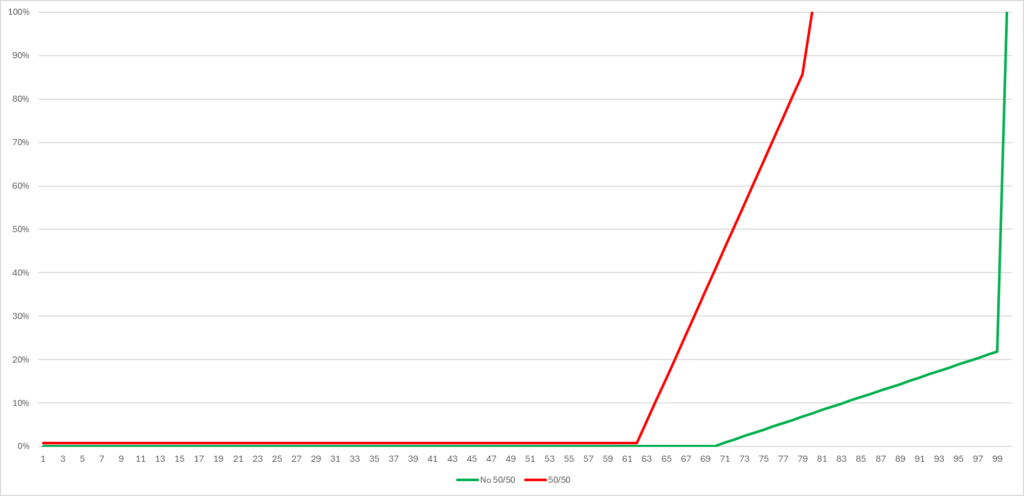
You can see that the 50/50 banner hits soft pity sooner and increases its SSR rate much faster than the 100% banner. This results in getting an SSR earlier and more often:
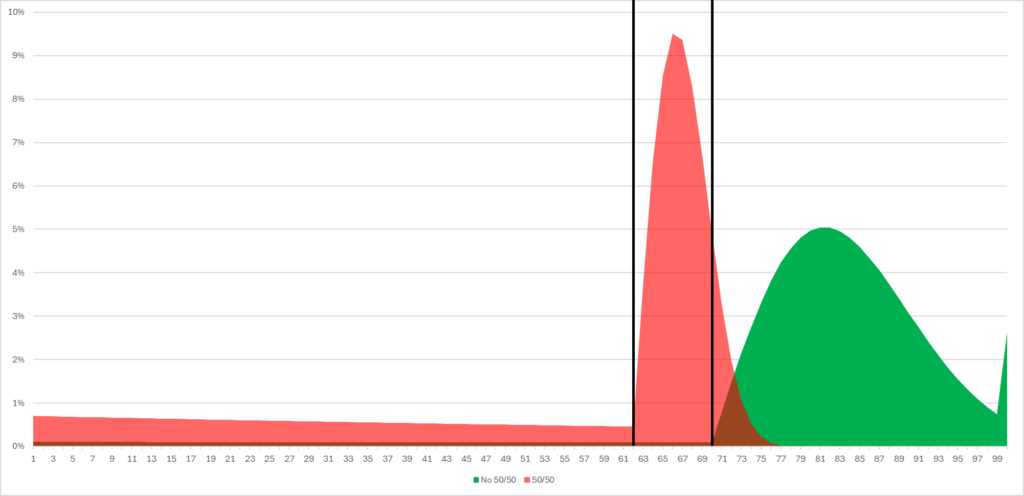
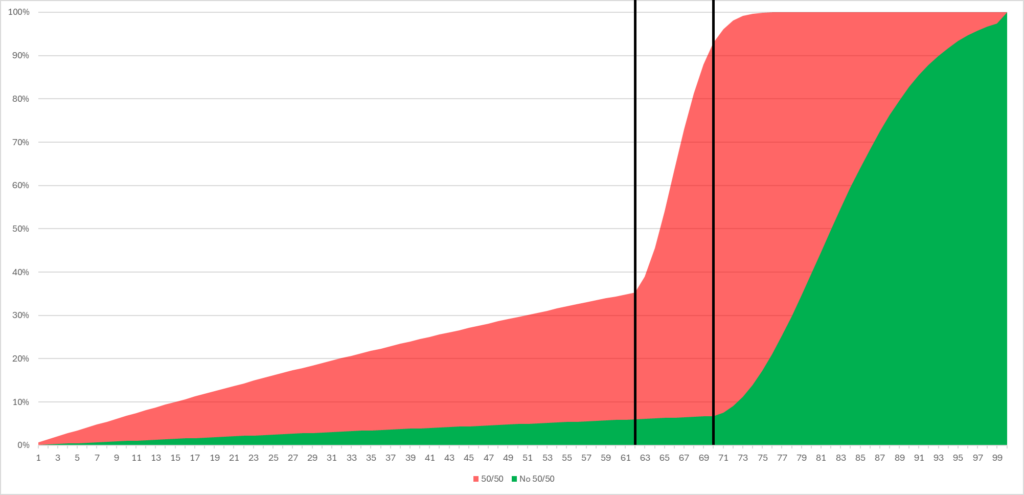
One thing to note as you view the probability density graphs for operative banners is that the 100% banner has a notable “spike” at the hard pity threshold. This is because of how slowly the SSR rate increments after soft pity for the 100% banner. However, you also have to realise the scale of numbers we’re working with and what they represent. The spike might look scary, but what it really means is that you only have around a 2.6% chance of hitting hard pity!
At this point, we can also check to make sure our model is correct by dividing the means of each type of banner into 1:
50/50 banner
100% banner
These match the listed consolidated SSR rates, which also means that Seasun isn’t lying to us. Probably.
Anyways, as appealing as the 50/50 looks compared to the 100% banner, that’s assuming you win the 50/50 every single time. Which - let’s be real - you won’t. If you already have a guarantee from a past 50/50 loss or an existing high pity count though, you do get to take advantage of the 50/50 banner's higher rates with little to no risk until you use it up. But once you factor in 50/50 losses, the calculations get a lot more complex, and modelling this was an extreme pain in the butt. I ended up using a Python script to generate the distributions, which I then graphed. Thank you to Varz and Potato for helping out with this process, you saved me quite a bit of time and sanity. With 50/50 losses considered, the graphs now look like this:
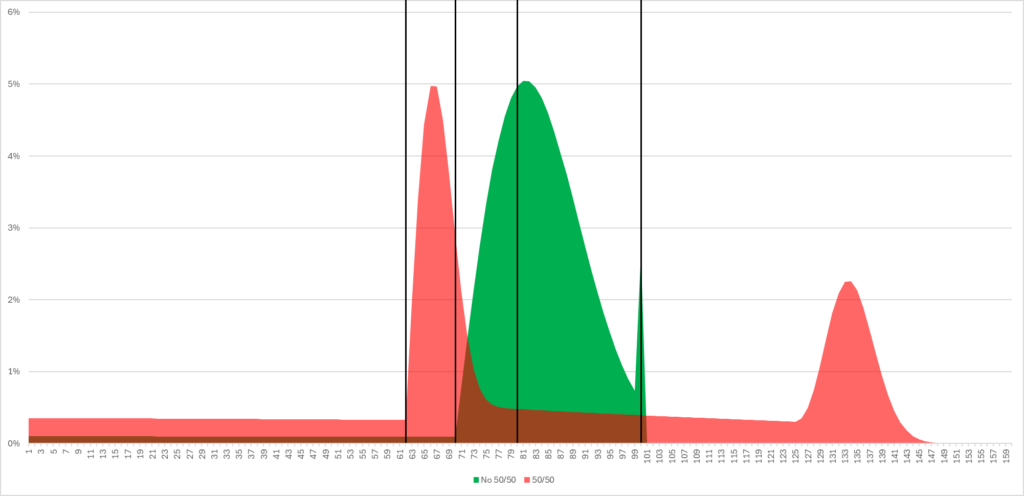
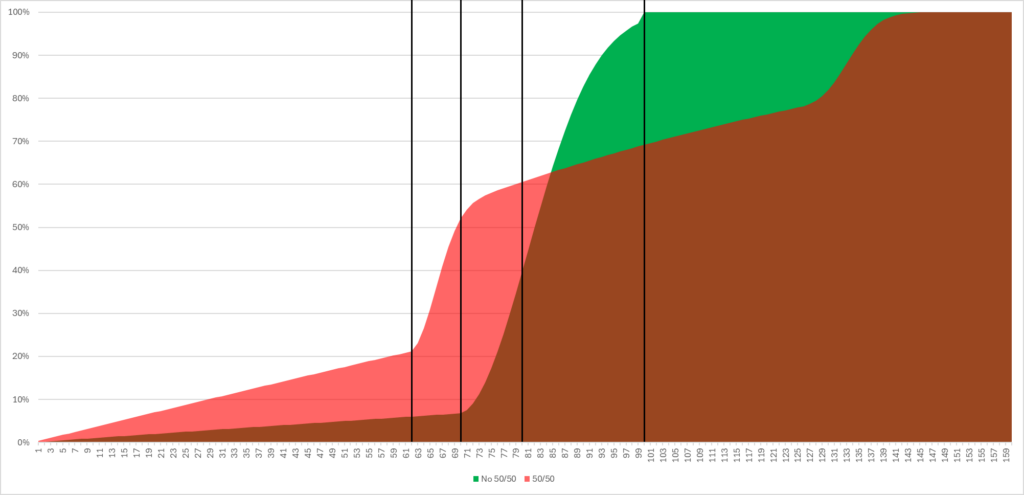
Now that the possibility of 50/50 losses has entered the picture, the probability density actually develops two “peaks." These represent the expected pull counts required first on a 50/50 win, then on a loss as you rebuild your pity count from zero. It’s immediately clear that pulling on the 100% banner will only cost you a few more pulls than a 50/50 win, but much fewer than a 50/50 loss:
- You can expect to get the featured SSR operative in around 75-90 pulls on the 100% banner
- A win on the 50/50 banner means that you’ll likely only need 60-70 pulls, but a loss bumps that up to 130-140.
In fact, you only have around a 69% chance (nice) of obtaining the featured SSR on the 50/50 banner by the time you reach hard pity on the 100% banner.
The mean also reflects this, as specifying that you have to pull the right SSR operative increases the 50/50 banner’s mean pulls required to basically the same as that of the 100% banner.
Weapons are more of the same:
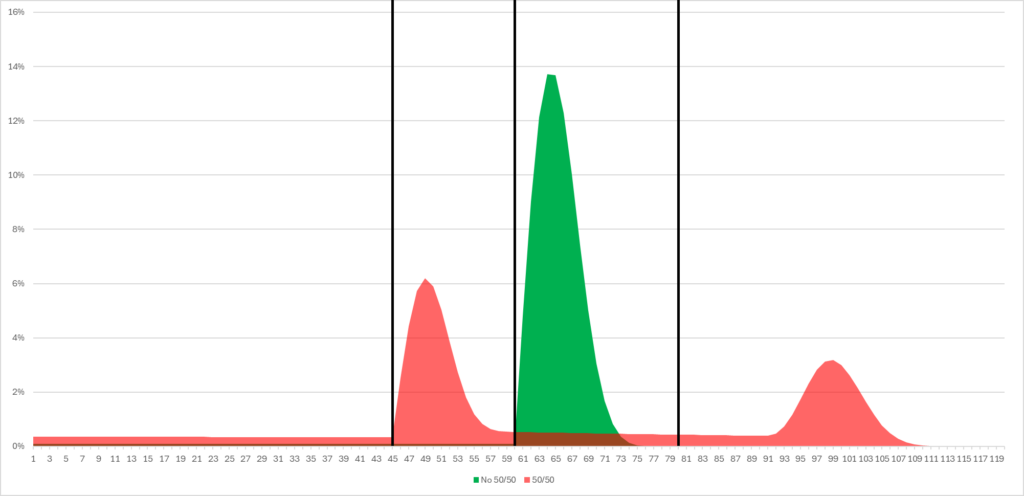
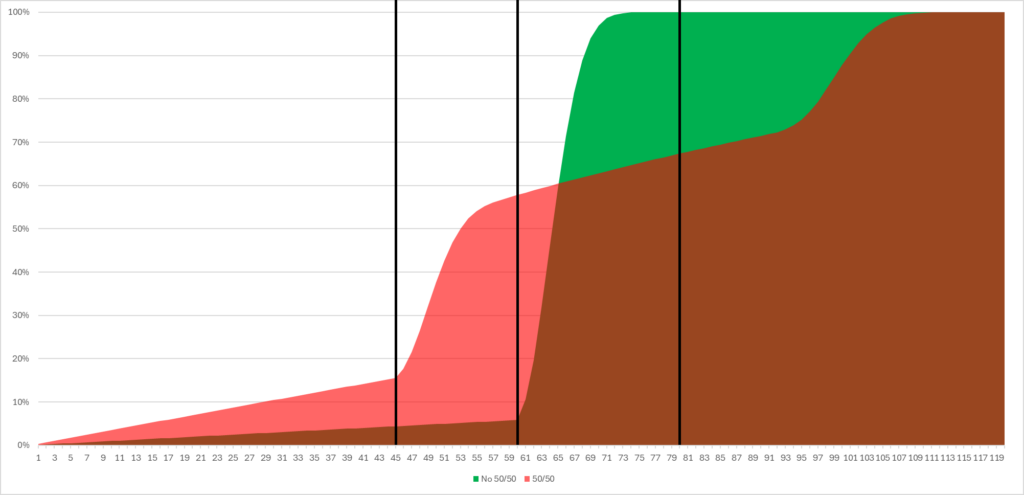
We get very similar results as with the operative banner, but with roll counts scaled down because of the higher SSR rate increments and lower pity thresholds:
- The 100% banner will require 60-70 pulls for the featured SSR weapon
- The 50/50 banner spits out your 50/50 win in just 45-50 pulls, while setting you back 90-100 pulls on a loss.
Once again, we see a slight advantage on a 50/50 win compared to the 100% banner, but a much heavier penalty on a 50/50 loss.
Big Takeaways
Overall, this was a lot of time and effort to determine something you probably already knew: the 50/50 banner will almost always be better if you win your 50/50, and the 100% banner is better otherwise. However, it does go a bit deeper than that. While you have to commit a few more rolls on the 100% banner compared to a 50/50 win, you consistently have to spend that higher amount of rolls.
Hm, let me phrase that a bit better.
The amount of rolls you can expect to spend for an SSR on the 100% banner is higher than that of a 50/50 win, but it’s consistently a predictable amount, which massively helps you plan your savings for upcoming banners. Meanwhile, the fact that you can lose on a 50/50 means that the amount of pulls you can expect to spend has a much larger variance - this is very clear to see by the fact that the probability densities for the 50/50 banners have two peaks as opposed to the singular bump that 100% banners have. That makes it challenging to save up effectively, as you all probably have experienced. If you save up enough for a 50/50 win, you’re left scrambling for more pulls if you lose the coinflip, but saving up enough to be able to eat a loss means hoarding a massive stockpile of pulls which is no easy task.
Planning ahead is a genuine superpower when it comes to not being burned by gacha, and the 100% banner provides you with much more capability to do so. Even if soft pity gives you nothing, hitting absolute hard pity only means spending around 20 more pulls than you’d expect. This is a much smaller hit compared to losing a 50/50 and having to build back your pity from scratch. Yes, it’s not as interesting knowing you have even worse odds of getting an early SSR and basically have to hit soft pity to get what you want. But your odds aren’t great on the 50/50 side either (21.2% on operative banners and 15.5% on weapon banners), so it’s not like you should be getting that many early SSRs anyways, and even then you’re not guaranteed that it’ll be what you want.
Now, are there good reasons to be pulling on 50/50 banners? Yes. Multiple even, depending on how far you’re willing to stretch the limits of plausibility:
- If you have a guarantee on the 50/50 banner, there really is no reason not to cash it in
- Similarly, if you already have a high pity count, the cost of losing a 50/50 decreases quite a bit
- And yes, if your uncle works at Seasun and rigs the 50/50 for you so that you always win, that’ll also make it better than the 100% banner.
If you value the “experience” of pulling gacha and seeing if you’ll get lucky, I guess there’s also a case to be made that the 50/50 banner provides more drama, and this evidently does appeal to a subset of players:

But I consider those people to be gambling addicts, more often than not.
For me at least, gacha is really just a means to an end, a way to get whatever featured item is available at the moment because it’s not like I have any other way of doing so. If there was a way to directly purchase new operatives and weapons with Digicash, I’d almost definitely prefer that as long as it was reasonably priced. The 100% banner is probably the closest we’ll ever get to that, providing a decently narrow range of pity counts that you’ll have to reach to get what you want.
The concept of soft pity sounds great on paper, but it’s almost always implemented as a way to offset a ridiculously low base rate. That’s really kind of the problem with “modern” gacha games in general, and why I personally could never really get into most gacha games released in the post-Genshin Impact era. The way I see it, either use a gacha with real rates from the get-go or get rid of it altogether. Using a version that utilizes soft pity as a way to make players commit to a certain number of pulls before subjecting them to more randomness only gives players the worst of both worlds (which is why game devs will presumably never stop using it from now on). This is without even considering the concept of 50/50, which really gets its bite when used in conjunction with soft pity systems. You don’t just get mad when you lose a 50/50 because you lost the coinflip, you’re also upset because it reset your pity and you have to either get extremely lucky with an early SSR or reach soft pity again from scratch so that you’ll be allowed to have an actual shot of using your guarantee. It’s admittedly a very well-designed system to make players spend more pulls; it would be admirable if it weren’t so insidious. But I digress.
TL;DR and Conclusion
- 100% operative banners will require around 80 pulls to get the featured SSR
- 50/50 operative banners will typically save you about 20 pulls if you win (~65 pulls), but will cost you up to 70 more pulls on a loss (~135 pulls)
- 100% weapon banners will require around 65 pulls to get the featured SSR
- 50/50 weapon banners will typically save you about 15 pulls if you win (~45 pulls), but will cost you up to 40 more pulls on a loss (~95 pulls)
- You’ll actually will need around the same number of pulls on either banner type to get a featured SSR over a large enough sample size, but using the 100% banner will let you plan your savings better due to being able to better predict how many pulls you'll need
- I personally recommend the 100% banner due to being more consistent
- If you already have a 50/50 guarantee or a high pity count on the 50/50 banner, you might as well use it, even if you plan on switching to the 100% banner
I know someone’s bound to bring it up, so I’ll say it again. Is using the 100% banner and paying for 70 throwaway pulls to get proper odds at rolling the new SSR operative exciting? No, and I’ll be the first to admit that. However, your early pulls aren’t statistically that much better on the 50/50 banner either (and the ever-looming threat of getting spooked is still very much real). And if you think about it as spending an extra 20-30 pulls to ensure that you won’t have to spend up to an extra 70 pulls instead, it’s a pretty good deal.
Oh right, I haven't even mentioned the bonus boxes. Every 165 pulls you do on the 100% operative banner and every 130 you do on on the 100% weapon banner (yes, this carries over when banners change) will give you a mystery box that awards you with a random permanent SSR operative or weapon, depending on which banner you got it from. It's a nice bonus, and presumably a way of balancing out the awful rates before you hit soft pity.
People will say that the 100% banner is boring and that it takes the “thrill” out of rolling gacha. They’re probably right. But the boring method is often the more successful one for a reason. It’s the classic tale of the tortoise and the hare, and we all know who wins that race in the end.

